Homepage / News Details
How Long After I Shock My Pool Can I Swim?
- Categroy:News
- Author:
- Origin:
- Release Time:2021-03-31 14:03
- Views:
【Summary】In short, if you want to make sure your water is safe before you swim, test it. Once your free chlorine level stabilizes and you can see the bottom of the pool, you can safely swim back to your CYA level.
How Long After I Shock My Pool Can I Swim?
【Summary】In short, if you want to make sure your water is safe before you swim, test it.
Once your free chlorine level stabilizes and you can see the bottom of the pool, you can safely swim back to your CYA level.
- Categroy:News
- Author:
- Origin:
- Release Time:2021-03-31 14:03
- Views:

How dirty is your pool?
In general, most equilibrium chemicals (such as pH, alkalinity, and calcium hardness) will be part of your pool water about an hour after they are added, at which point you should be able to swim.
On the other hand, it takes longer to adjust the pool.
Therefore, there must be a longer waiting time before swimming safely.
But how long does one have to wait before swimming in safe water?
There are usually a few factors you need to consider before giving your swimmer a realistic time frame.
First, evaluate how dirty your pool really is.
Obviously, a pool that is a few days away from becoming a swamp requires more time and maintenance than a rainy pool.
Swimming pools that require a lot of treatment because of algal blooms come in their own category.
That could take weeks.
Typically, pool owners use three to five times the normal dose in shock.
However, in severe cases, some pools may require five to ten times the normal dose.
Such large doses of chlorine are used to break down the chlorine, organic waste and other contaminants in the pool and to re-establish positive levels of free chlorine.
This is not an overnight process, and it will take several days to overcome.
The environment and the amount of chemicals in each pool is different.
That's why it's impossible for a pool technician to give a specific time frame that works for each pool.
What kind of shock did you use?
The type of shock can also affect when you jump back into the pool.
Two of the most common shocks we encounter at INYO are those with chlorine and those without chlorine.
Chlorine shock, or cal-hypo, constitutes the majority of chlorine-based shock offered today.
The main difference is the concentration level of the active ingredient.
Most chlorine shocks take longer to interact with the pool than non-chlorine shocks.
The chlorine-free shock oxidizes bacteria and organic matter in the pool without the need for any additional chemicals.
In this case, you can swim in the pool in an hour.
Chlorine shock has a high pH and can change your pH and the amount of chlorine in the pool.
Chlorine-free shock has a neutral pH and won't affect your other chemical levels.
It's a common precaution to monitor the type of chemicals you're pouring into the pool.
As you can see, even the type of shock you use can affect other chemicals in your pool.
In turn, it can delay your swimmer's return to the pool.
How long do I have to wait?
So far, I've written a few articles, but I haven't answered the question: How long will you have to wait to swim again after shocking your pool?
Technically, if your free chlorine levels remain constant, swimming to your shock level, depending on your CYA, is safe.
Remember, no one should swim in a murky pool, even if your free chlorine levels remain constant.
We recommend that you do not return to the pool if the water is so clear that you cannot see the bottom.
From a safety point of view, it prevents you from seeing children under water.
Another rule of thumb is to follow the manufacturer's instructions on the back of the product.
Typically, for all chemicals, manufacturers provide instructions, precautions, and storage and disposal tips.
The back of the shock bag we analyzed read: "Follow the label instructions for each product.
Do not re-enter the treated pool where the concentration exceeds 4ppm.
The manufacturer's warning parallels swimming to your shock level.
In short, if you want to make sure your water is safe before you swim, test it.
Once your free chlorine level stabilizes and you can see the bottom of the pool, you can safely swim back to your CYA level.
Releate News

Time of issue : 2024-04-15 16:52:27

Time of issue : 2024-04-09 10:13:04

Time of issue : 2024-04-01 17:10:12
CONTACT US
PRODUCTS
CALCIUM HYPOCHLORITE
TCCA
SDIC
BCDMH
FEEDBACK
© 1999-2018 北京网站建设有限公司 Copyright © 2012-2022 All Rights Reserved Powered by www.300.cn 冀ICP备12012949号 津公网安备 12010302002173号 Seo tag

